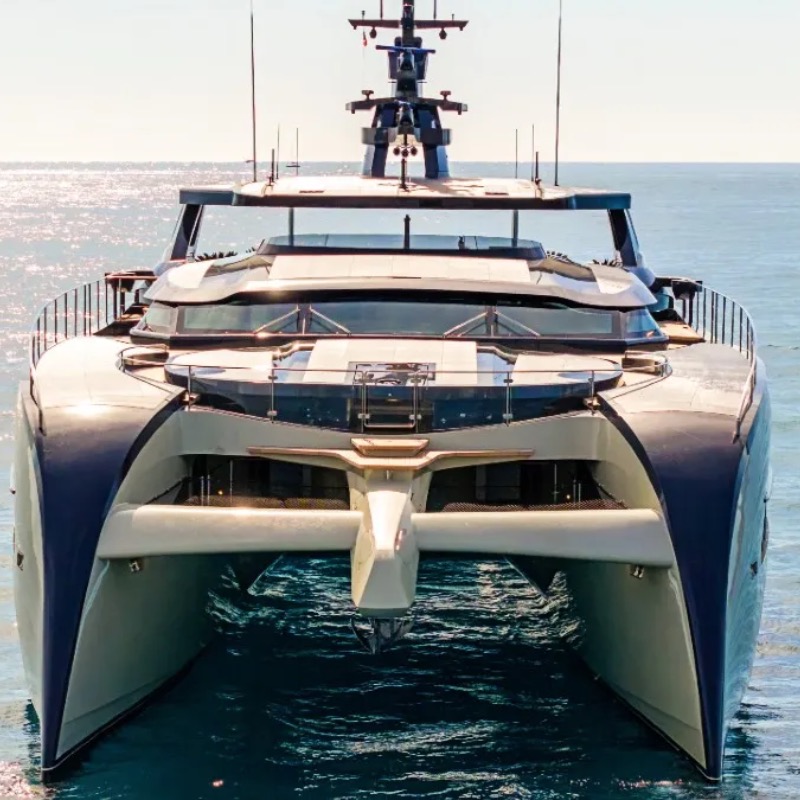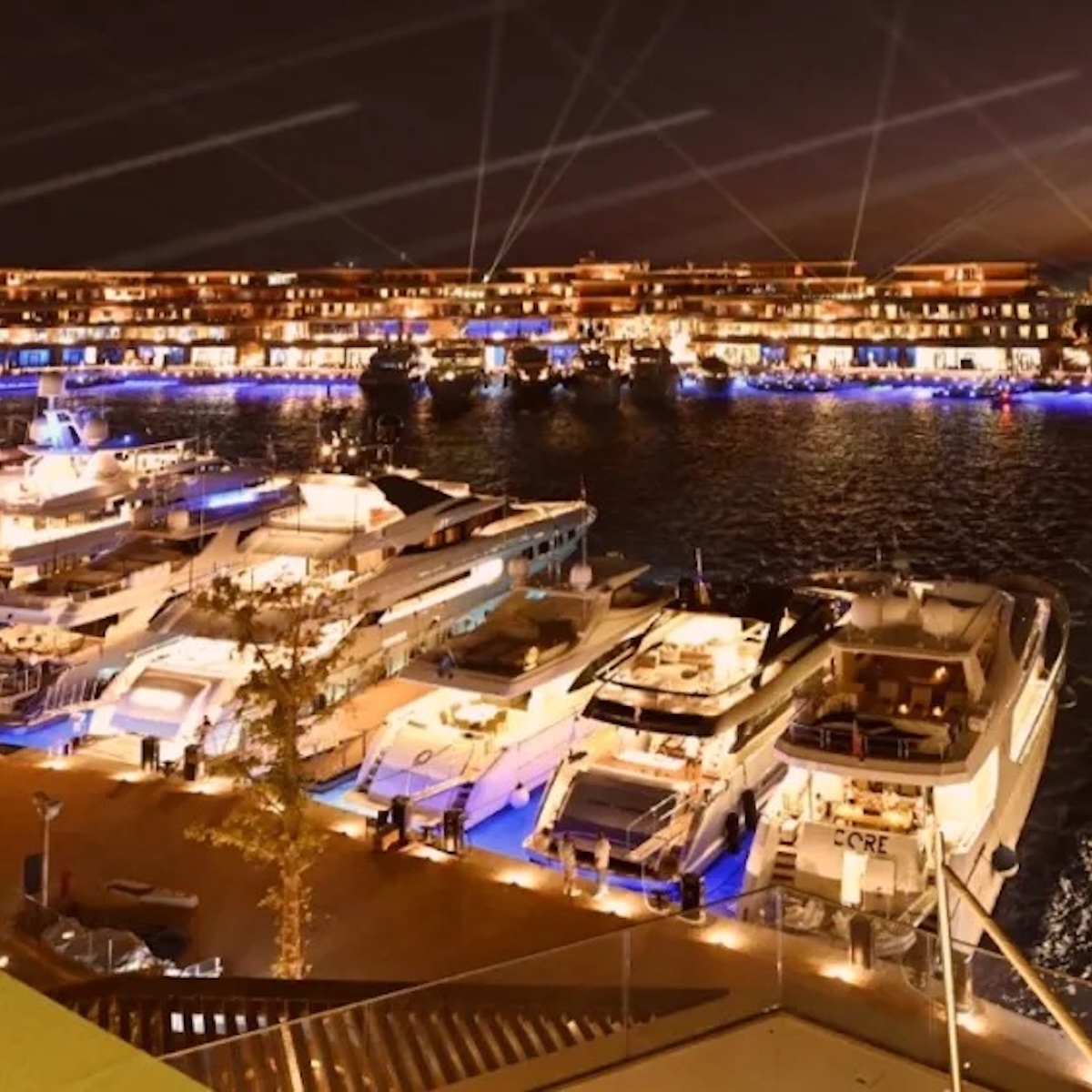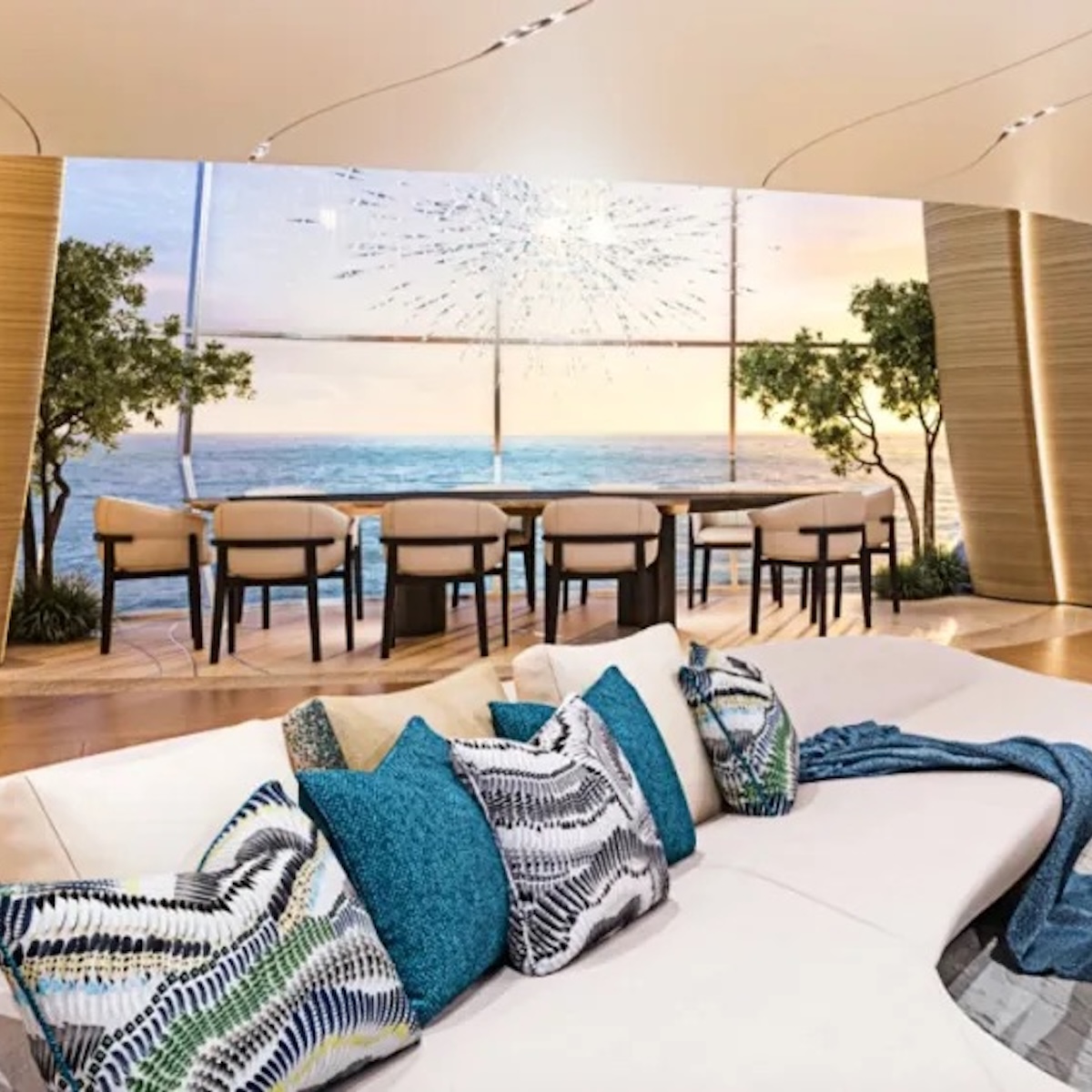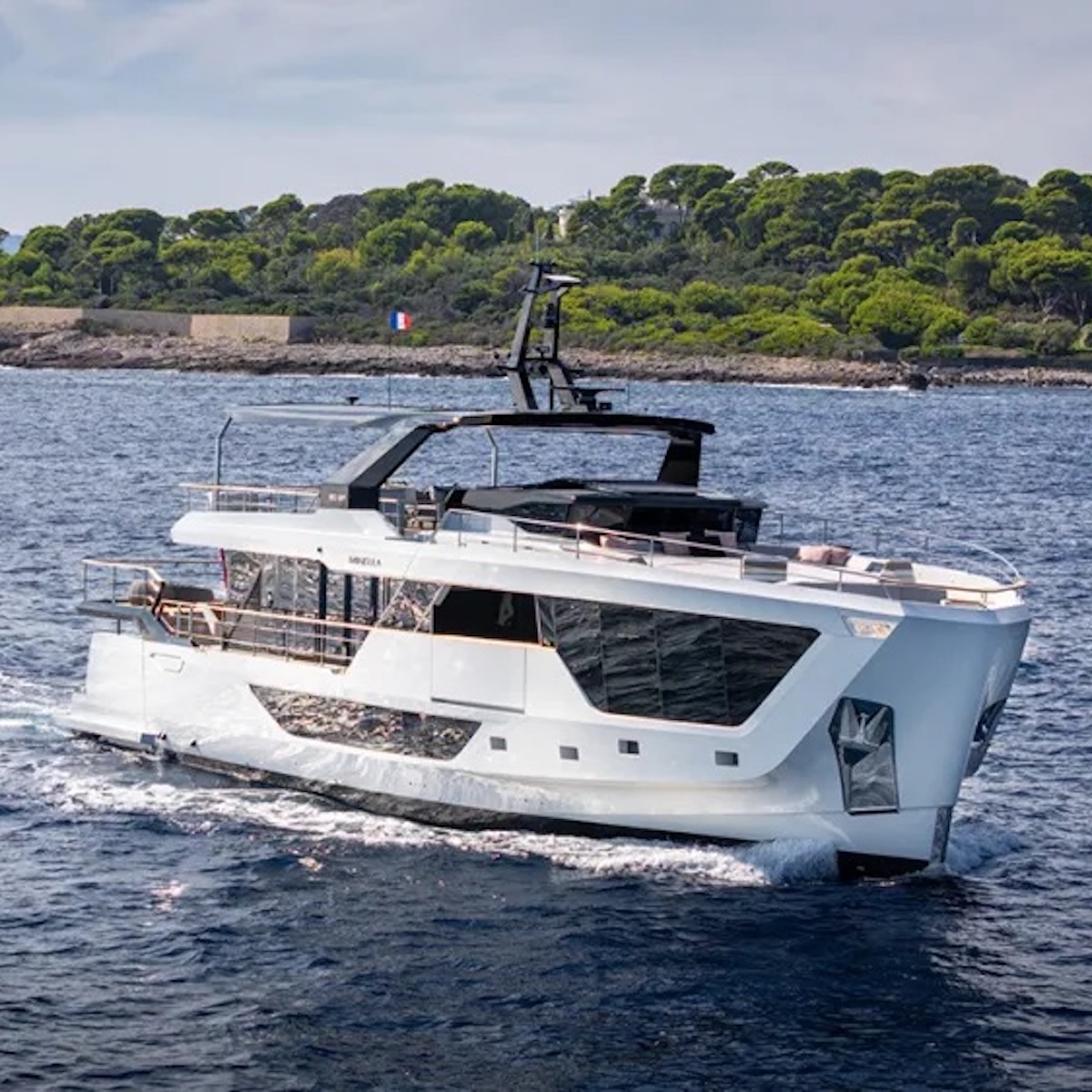Feadship has outdone itself with its latest fleet member, and that was precisely the point.
Christened Obsidian, the new 276-footer is more energy efficient and even less polluting than the Dutch yard’s first pioneering hybrid, Savannah, which launched in 2015. More impressive still, the entire design process was carried out at the height of the pandemic.
Feadship first developed a Yacht Environmental Transparency Index (YETI) with the folks at De Voogt Naval Architects that can determine a yacht’s carbon profile and environmental impact based on all of its components and operations. (It looks at not only emissions but also the long-term effects of different construction materials.) Feadship then devised a tool with 20 major industry partners to predict the environmental impact of a standardized operational year in the yacht’s lifecycle. The newcomer achieved some impressive results, too.
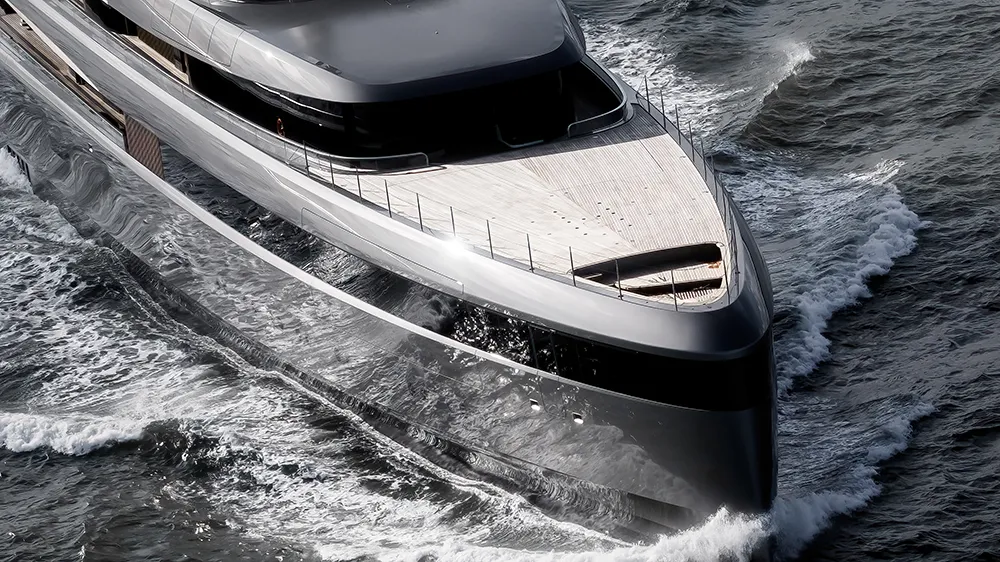
Feadship
It is estimated the Obsidian will operate with 27 percent less total environmental impact than a yacht of similar size launched only five years ago if run on fossil fuel, and 60 percent less if powered using a non-fossil diesel fuel called HVO. Obsidian actually ran on HVO during sea trials and emitted 90 percent less carbon than a traditional gas-powered vessel. Feadship says the trials showed Obsidian is even more efficient than previously calculated.
Biofuel isn’t the only exciting innovation, of course. Obsidian‘s low, slim hull has been optimized for cruising, her fighting weight has been reduced, and her overall balance improved. On top of that, the yacht is equipped with a streamlined diesel-electric propulsion system and has 4.5 times more electrical storage capacity than its predecessor.
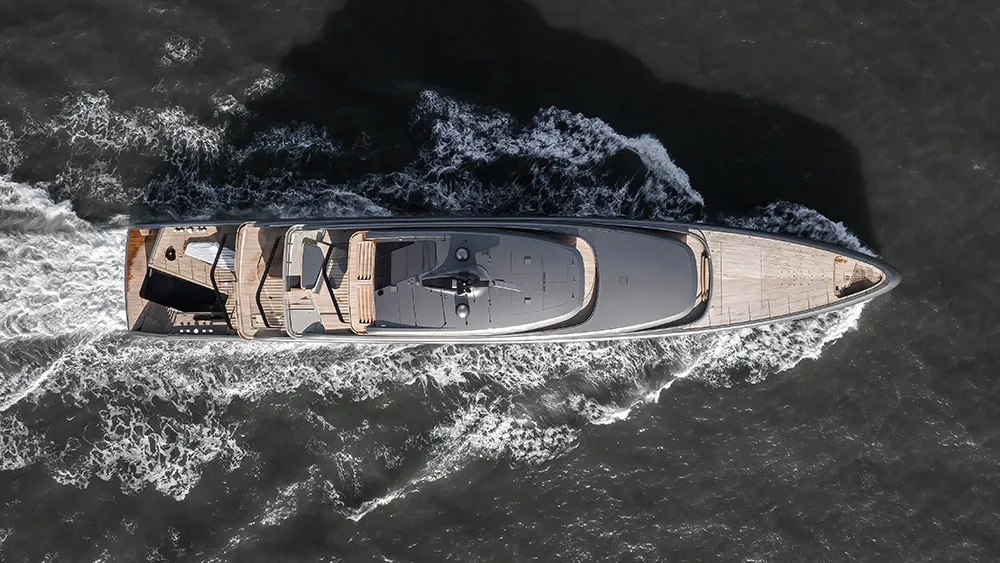
Feadship
The cruiser is powered by a 4.5 MWh battery bank and four tweaked CatC32 engines. The 1,000-volt system is fully powered by electricity, too. Obsidian is expected to be able to cover 35 nautical miles at 10 knots on batteries alone. At anchor, the batteries will provide silent operation for between 10 and 15 hours. Feadship also incorporated several energy-saving features that reduce the yacht’s hotel load.
“There are so many points of energy savings integrated on this yacht that it is hard to count,” project manager Mark Jansen said in a statement.

Feadship
According to Jansen, the Obsidian‘s volume is in line with larger 328-footers. Feadship opted for a single-level engine room for the first time in many years to give the designers more freedom with the layout. Both the exterior and interior styling was executed by RWD and MONK Design. The duo kept things bold and modern both inside and out.
Feadship says the living quarters are full of surprises. There is a hidden staircase that leads to a study and a sunken lounge on the main deck, for instance. Similarly, an asymmetrical atrium staircase takes guests to a lower deck dining saloon with an entire wall that opens to provide a stellar view at sea level. Further toward the stern lies a scenic Aqua Lounge that can double as a cinema or a classroom and a fully equipped gym.
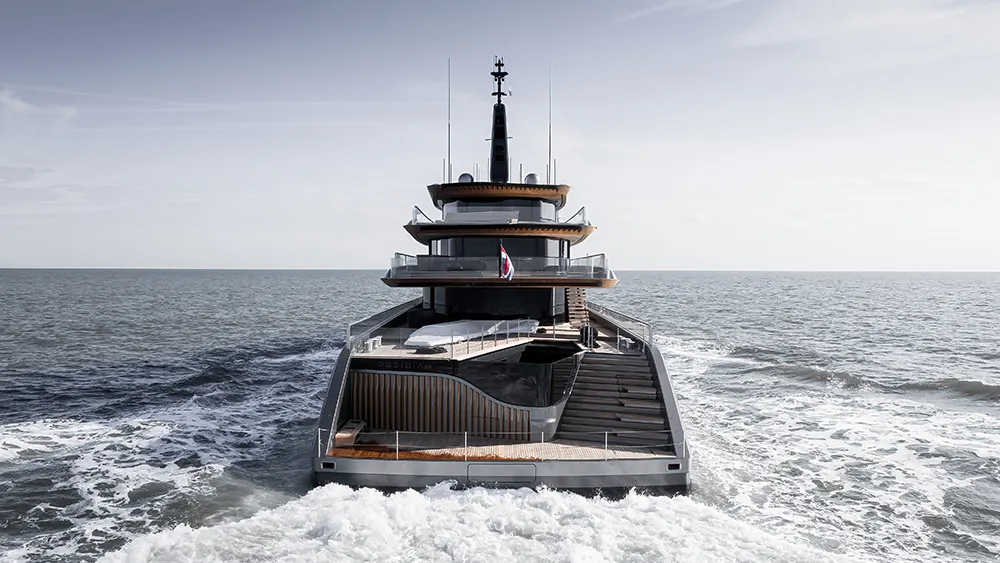
Feadship
Another surprising touch is that none of the rooms have any 90-degree angles except for the seven staterooms. One more hidden gem is the observation lounge in the bow. Accessible via a main deck corridor, this secret escape sports floor-to-ceiling windows for cinematic vistas.
In keeping with the green theme, Obsidian’s two custom-made primary tenders are both electric-powered and can be charged at special stations installed on the yacht.
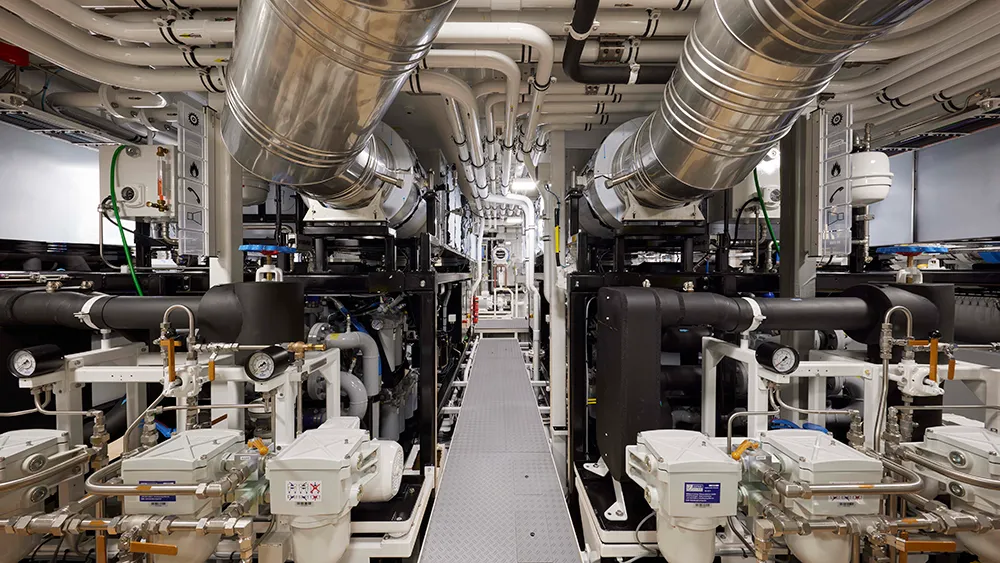
Feadship
Obsidian is the first of Feadship’s new generation of large eco-friendly cruisers, and its launch puts the yard another step closer to its goal of producing carbon-neutral superyachts by 2030.






